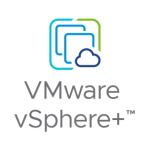VMware vSphere Data Protection (VDP) Advanced 5.5 was announced at VMworld in Barcelona. I am happy to announce that it is now available for download. Even though this looks like a “dot release”, VDP Advanced 5.5 represents a significant update to this backup and recovery solution for VMware, from VMware. These features are among the highlights of what is new with VDP Advanced 5.5:
- Replication of backup data between VDP Advanced appliances
- Support for app-level backup and recovery of Microsoft SharePoint
- Mailbox recovery for Microsoft Exchange
- Support for using EMC Data Domain as a backup data destination
- Automated backup verification
Replication
vSphere Data Protection Advanced 5.5 features the ability to replicate backup data from one VDP Advanced appliance to another for offsite data retention. The replication engine is very robust and efficient. For example, specific restore points can be selected for replication. Figure 1 shows the selection of two Linux VMs and Exchange data (mailboxes).
It is also possible to limit the number of replicated backups, as shown in Figure 2.
Replication jobs can be scheduled to run daily, weekly, or monthly. For the replicated backup data retention policy, you can keep the same retention policy as assigned by the backup job or a separate retention policy can be assigned. For example, the local backup job assigns a retention policy of 30 days. I create a replication job for this backup data and assign a retention policy of 90 days to the replicated data.
VDP Advanced 5.5 supports various replication topologies. You can simply replicate backup data from one VDP Advanced appliance to another or you can perform 1-to-many and many-to-1, as needed. Backup data is deduplicated, compressed, and encrypted prior to replication to to secure the data and minimize network bandwidth usage.
Application Backup Agent for SharePoint
VDP Advanced 5.5 supports application backup and recovery of Microsoft SQL Server, Microsoft Exchange, and now – Microsoft SharePoint. Most application can be backed up using an agent-less solution, However, a few applications such as the ones above benefit from having backup agents designed specifically for the application. This enables more granularity, additional functionality, and true application-consistent backup and recovery. With these agents for VDP Advanced, individual databases can be selected for backup and restore, database logs are properly handled, multiple backup streams can be enabled, and administrators have the choice to restore data to its original location or to other application servers in the environment. Figure 3 shows enabling multiple backup streams for SharePoint.
Mailbox Recovery for Exchange
The VDP Advanced agent for Exchange has been enhanced to provide even more granular restore capabilities – specifically, the ability to select individual mailboxes for restoration. Figure 4 below shows the VDP Advanced user interface (UI) when restoring a mailbox.
The user’s mailbox is restored to a folder called Recovered Items as shown in Figure 5.
The user can browse the restored data and retrieve items he or she wishes to keep. The Recovered Items folder can then be deleted when no longer needed.
EMC Data Domain as a Backup Data
VDP Advanced 5.5 supports the option of using EMC Data Domain (DD) as a destination for backup data. This enables additional scale and performance since the DD Boost libraries are built into VDP Advanced 5.5. The VDP Advanced virtual appliance handles the backup data metadata and the actual backup data is stored on the Data Domain appliance. More than one VDP Advanced virtual appliance can be configured to utilize a single Data Domain appliance. In the case where backup data replication is configured between two VDP Advanced appliances with separate Data Domain appliances, replication occurs at the Data Domain level (Figure 6).
Automated Backup Verification
An important part of an administrator’s job is verifying the integrity of backup data. The best way to do this is performing actual restores on a regular basis. VDP Advanced 5.5 streamlines this task by allowing the administrator to schedule backup verification jobs. During this process, the selected VM is restored to the vSphere environment (disconnected from the network), the VM is booted, and VDP Advanced uses VMware Tools heartbeats to verify whether the VM was restored and booted successfully. Optionally, a script can be run to provide further verification that the process was successful. The results of the backup verification job are reported in the VDP Advanced UI and in email reports. A backup verification job can be scheduled to run at a specific time on a daily, weekly, or monthly basis. This feature provides the highest level of confidence that virtual machines can truly be restored from backup data.
All of the features above are new to VDP Advanced 5.5. VDP Advanced 5.5 also received all of the new capabilities introduced in VDP 5.5 such as direct-to-host virtual machine restore, backup data replication to EMC Avamar, and new options for configuring backup data storage. For information on these items, please see this article.
More information including documentation, videos, and more can be found here. You can also download an evaluation copy of VDP Advanced 5.5.
@jhuntervmware





















